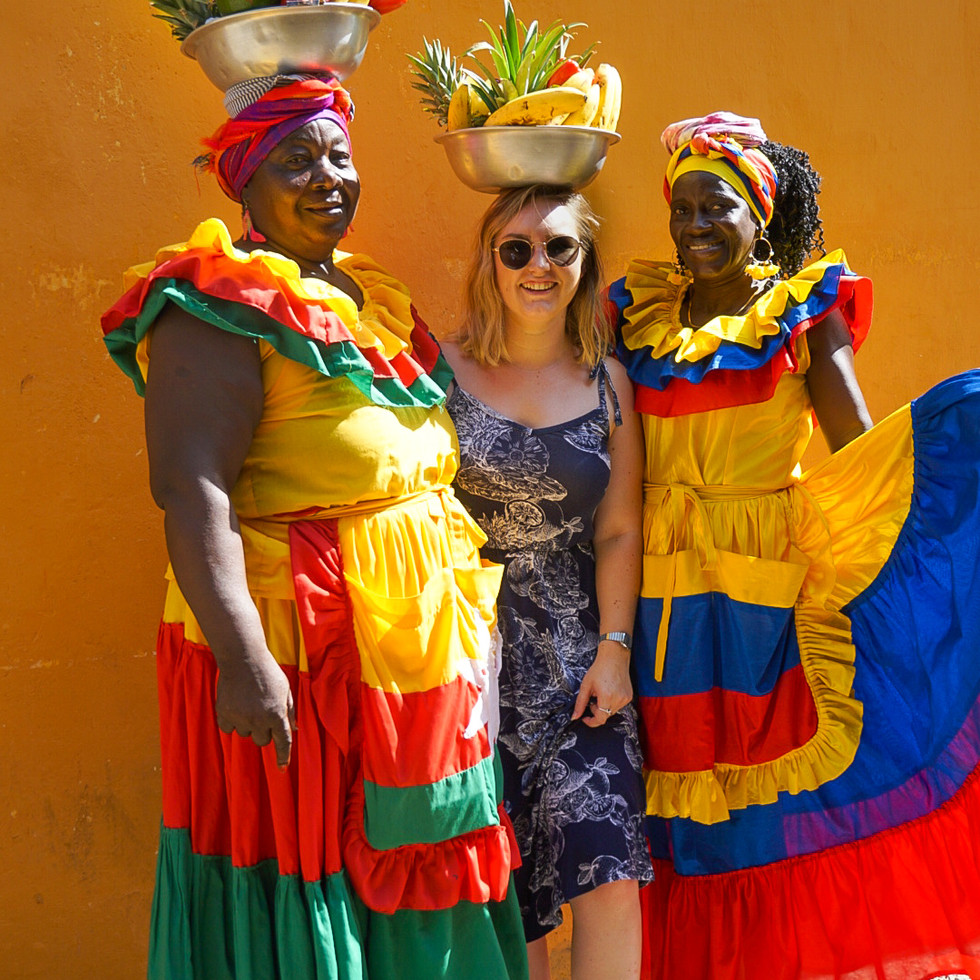Cartagena, Colombia
- Cara Brown
- Apr 3, 2020
- 3 min read

Colombia...where do I begin? My first taste of South America, a continent I fell completely and utterly head over heels in love with.
When we told our family and friends we would be heading to Colombia, a look of horror fell across all of their faces. And I mean all of their faces.
Cocaine. Cartels. Civil War.
The only things many people seem to know about Colombia, but from my huge amounts of research, I knew Colombia was a gem waiting to be discovered. It's people and government were trying so hard to shake the stigma that the country had gained through the negative headlines and media coverage. It was quickly becoming one of the top travel destinations.
Cartagena was our first port of call, not only Colombia, but all of South America. Situated on the northern coast, it makes up part of the Caribbean coastal region. Founded in 1533, it became the main port for transporting trade with Spain and its overseas empire, although settlement by various indigenous people dates all the way back to 4000 BC.
Arriving in the colonial city after a very short (1.30hr!) flight with American Airlines from Miami, USA, there were 2 things I noticed immediately.
1) The heat - sticky and sweaty would describe it nicely.
2) The noise - or should I say, the horns honking! The taxis drive round and round honking their horns in their best efforts to get your attention on the off chance that you may decide you want to hop in and take a ride. This was something we noticed in all of Colombia.
We made our way to our hostel (Casa de Pozo - would recommend), situated in Getsemani. Just south of the ancient walled old town, lies this neighbourhood which was once characterised by crime. Now the hippest district in Cartagena, old buildings have been turned into boutique hotels and the drug dealing plazas are now full of little carts selling street food and fresh fruit juices.
Getsemani is a maze of colourful calles and carreras, the streets lined with brightly coloured houses and beautiful murals painted by local artists. We spent a couple of days wondering the area, dipping in and out of the hipster cafes that have appeared (enjoying the local coffee of course!) and spent several evenings enjoying arepas (corncakes traditionally from Colombia and Venezuela) for dinner whilst people watching in Plaza de Trinidad.
Of course, you cannot visit Cartagena and not explore the famous colonial walled old town. After all, it is probably photographs of this that drew you to Cartagena in the first place! In 1984, Cartagena's colonial walled city and fortress were named as a UNESCO World Heritadge Site. Now, the streets inside the Walled City become particularly busy during the late morning and into the afternoon, especially with lots of cruise ships now including the rainbow coloured city to their itineraries. Instead the best time to explore the cobbled streets is first thing in the morning before the crowds and the heat from the midday sun.

Another sight to behold are the 'Palenqueras'. These are the traditional fruit selling women from Palenque de San Basilio. When the Spaniards arrived with kidnapped African slaves into the port of Cartagena, some escaped and fled around 50km south east from Cartagena, setting up their own village called Palenque de San Basilio (Walled City of San Basilio). The villagers tried to free all the African slaves arriving into the port, and were so successful at doing this that eventually the Spanish Crown issued a Royal Decree in 1691 guaranteeing the freedom of the people living in Palenque de San Basilio. The fruit sellers would walk everyday to the streets of Cartagena to sell their produce from their hand woven baskets. Their beautiful brightly coloured dresses have also meant they have quickly become iconic to Cartagena. Now, whilst these ladies still come from the town of Palenque de San Basilio, they expect a small tip in exchange for their photograph.



















Comments